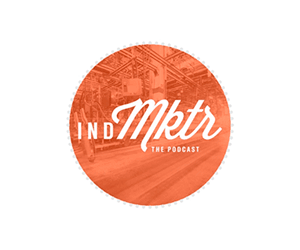No matter what you’re selling, your email list is one of your most important marketing tools. But at some point, we all notice a drop-off in interaction from our subscribers. For industrial sellers, long sales cycles make it particularly common for your leads and buyers to lose interest over time. That means that creating an email re-engagement campaign to put the fire back into customer connection is so important. The idea is simple: connect with old subscribers and make sure that when the time comes to renew a contract or replace some hardware, your business is the number one thing on their mind.
The art of email re-engagement campaigns requires a delicate tightrope walk. On the one hand, you’re right to assume some familiarity and camaraderie with your audience. But on the other, you may need to start from scratch when informing them of your products and services. Let’s discover how to craft these subtle email campaigns for success in any cycle, beginning with the rationale behind them.
Why Inactive Email Subscribers Are Costing You Money
“Inactive subscribers are inevitable with any email list; you can’t energize a whole email list with a single email,” says Curtis Spencer, a writer at PhDKingdom and Britstudent. “But by neglecting your inactive subscribers, you’re ignoring a potentially valuable revenue stream.”
List Degradation
According to HubSpot, email marketing lists degrade by about 22% each year, meaning that roughly one in five subscribers drop off annually. However, for industrial sellers, this number can be even higher as long sales cycles alienate customers from their suppliers. When as many as a quarter of your customers are forgetting about you each year, it’s time to take action.
Skewed Data
Email lists are also an incredibly valuable source of data for your organization — data which helps guide your future marketing decisions. An unhealthy list skews the source of this data, meaning you can easily take a wrong turn in your marketing direction. For example, you might be sending powerfully crafted emails to your subscribers, but since they’re not paying attention, you won’t know if you are hitting the mark.
A Damaged Reputation
Email clients score your email campaign performance based on their cumulative effects on subscribers. Poor engagement rates are indicative of an unhealthy list and can initiative a downward spiral that can damage your organization’s reputation. When email clients register consistently poor responses to your emails, they put your campaigns at a lower priority, creating a vicious cycle that impacts reach and sales.
At the very least, you should be cleaning your email list at least annually to preserve your reputation. But before you purge inactive subscribers, an email re-engagement campaign can revitalize your list.
Launching Your Email Re-engagement Campaign
One thing to articulate before you start trying to re-engage your subscribers is whether you’re crafting a single re-engagement email or launching a true email re-engagement campaign.
A single email might target inactive subscribers, with the goal of converting them into active subscribers, or purging them from your list. However, a campaign for re-engagement will require a longer-term strategy, involving a series of carefully crafted emails. “Each approach has its merits,” says Cynthia Richardson, a journalist at Write My X and 1Day2Write. “An email re-engagement campaign might involve greater ROI but require more effort at the outset, and a single re-engagement email is faster and more efficient if cleaning your list is a priority.”
Segmenting Your Subscribers
Once you’ve determined whether your re-engagement strategy will consist of an isolated re-engagement email or a broader re-engagement campaign, it’s vital to segment your subscribers so that you aren’t spamming your engaged users with misdirected emails. It’s a cardinal sin of email marketing to waste your users’ time so an email re-engagement campaign that doesn’t segment your subscribers can be counterproductive.
To start, segment your inactive users into a subset of your main users. This will be your re-engagement list. How you define inactive is up to you. It could be someone who hasn’t opened an email in six months or hasn’t clicked on an offer in three months. For industries with long sales cycles, you can extend these numbers — for example, taking them up to eighteen months to ensure you recapture as many inactive subscribers as possible.
Crafting Your Re-engagement Emails
When it comes time to craft your re-engagement emails, it’s vital to remember one overriding piece of information: The emails you’ve been traditionally sending haven’t hit home with this subset of your list. Don’t tweak your regular marketing emails or simply re-headline them with phrases like “Remember Us?” as your regular approach has already failed to hit the mark.
Email Re-engagement Ideas for Long Sales Cycles
Traditionally, email re-engagement campaigns can incentivize inactive readers to return to the fold through offers and discounts. Depending on what you’re selling, this can be a valuable way to reignite interest in your brand from lost leads. For example, offering a one-off 20 percent discount can be enough to encourage users to make a purchase that reminds them why they valued your brand in the first place.
In an industrial setting, however, the sales funnel is often more complex, meaning simple discounts can be ineffective. Instead, tailor your email re-engagement campaign to the products and service you offer: the discount could be on a maintenance plan for machinery, for example, or a limited-time time-limited offer on a manufacturing SaaS product.
Hitting the Headlines
The body of your email is ultimately irrelevant until your user has opened the email. For re-engagement, this is often the biggest hurdle. After all, disengage recipients have most likely been filing your emails in the trash. An engaging subject line is therefore vital for creating the impulse to open your email.
A nod toward a diminished relationship often gets peoples’ attention. For example, saying “We Miss You” or “Is It Us Or You?” often work as re-engagement entrees. For B2B selling, a professional approach can also work wonders — e.g., giving users the opportunity to unsubscribe demonstrates respect for their time. In this regard, subject lines such as “Do You Still Want To Hear From Us?” can encourage users to open your email and discover the engaging content within.
Email Re-engagement Is a Savvy Marketing Move
Addressing inactive users using email re-engagement campaigns is savvy marketing as it’s quicker and cheaper than generating new leads.
For those operating within long sales cycles, the distance between sellers and buyers is an additional challenge, but by finding the right offers and ways of connecting with your audience, you can ensure nobody gets lost in the sales funnel.
Bottom line: Don’t give up on your inactive subscribers! Rather, craft creative, unique and eye-catching email re-engagement campaigns that remind them of who you are and what you do.




